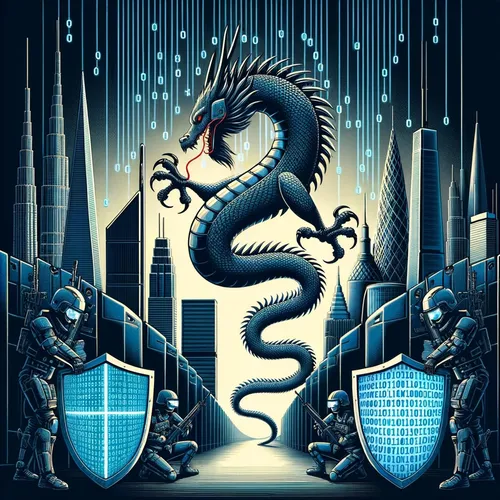Cyber Siege! China's AI-Powered Hacks Scorch US Finance & Courts 🔥💻🇨🇳 Feds Fight Back with Zero-Trust & Quantum Crypto 🛡️
- Author
- Quiet. Please
- Published
- Wed 13 Aug 2025
- Episode Link
- https://www.spreaker.com/episode/cyber-siege-china-s-ai-powered-hacks-scorch-us-finance-courts-feds-fight-back-with-zero-trust-quantum-crypto--67359531
This is your Dragon's Code: America Under Cyber Siege podcast.
Listeners, Ting here, and you’ve picked the perfect time to check in because America’s digital frontlines have been burning up with some of the most sophisticated cyber bombshells courtesy of—no surprise—Chinese state-backed actors. Let’s not waste a millisecond and dive right into Dragon’s Code: America Under Cyber Siege.
First, let’s talk about the past few days—nearly every major US sector faced a cyber onslaught. The judicial and financial systems were hit especially hard, and according to analysts over at AINvest and cybersecurity firm CrowdStrike, Chinese hackers exploited third-party vendors to breach the Treasury Department, exposing over 150,000 internal emails. They didn’t stop there. Sensitive legal records in the federal judiciary’s CM/ECF and PACER systems were compromised, putting confidential informant info at risk and rattling the very trust that keeps the court system ticking. CrowdStrike’s CTO, Adam Meyers, put it bluntly: the velocity and automation of these attacks have reached “supersonic” due to aggressive use of generative AI tools.
Now, technique-wise, this week’s red-hot cyber maneuvers were textbook “living off the land.” Attackers hijacked software update mechanisms and leveraged credential theft across supply chains. They sent out AI-generated spear phishing campaigns that even fooled some senior staff at CitiBank, escalating these into multi-stage ransomware that locked up high-speed trading platforms for four tense hours. According to Palo Alto Networks threat chief Wendi Whitmore, lateral movement between cloud accounts showed clear evidence of pre-positioning—essentially setting up kill switches in critical infrastructure for future leverage.
As for attribution, the US didn’t mince words. At the United Nations’ OEWG on cybersecurity, US negotiators publicly condemned what they called China’s “wide-scale pre-positioning on the operational networks of critical infrastructure systems.” The Biden administration followed up with a memo from Anne Neuberger, Deputy National Security Advisor, which stated that technical indicators fingered Chinese-linked clusters tied to the Ministry of State Security’s infamous APT41 unit. The forensics pointed to unique command-and-control server fingerprints and Mandarin-language code strings left—accidentally or not—on exfiltrated files. Security researcher Louise Marie Hurel explained that China’s increasingly brazen attacks have gone from just data theft to operations that could actively cripple water, power, and healthcare.
Let’s get to the fight back: Defensive measures have gone full DEFCON 1. Microsoft rolled out its new AI-powered threat detector across all federal networks, which blocked several secondary attacks in real time. Financial Services Information Sharing and Analysis Center (FS-ISAC) issued a mandatory zero-trust verification update; basically, every access point now requires multifactor authentication, including biometric checks at critical nodes. And the Department of Energy, burnt by close calls at several regional grids, finally invested in air-gapped backups and quantum-resistant encryption for operational networks.
So, what’s the takeaway from cyber experts like retired Air Force Lt. Gen. Chris Weggeman? First—agility wins. The old playbook of years-long projects is toast; now it’s all about weeks of rapid-fire capability development and deeper partnerships with private sector cyber wizards like CrowdStrike and Palo Alto. Second, this week exposed the existential need for resilience—not just technical solutions, but crisis rehearsals and inter-agency drills to keep the “digital Ferrari” of US Cyber Command ready to shift into overdrive.
And last, a quick insight: as China’s economic-tech rivalry with the US heats up, expect the digital battlefield to get only trickier, with quantum, AI, and...
